Tallinn University
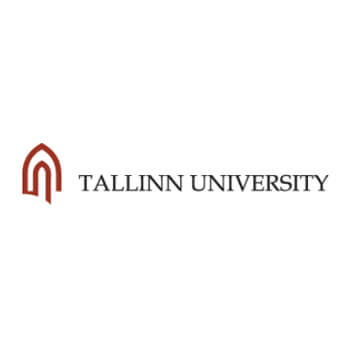
Founded: 2005
Address: Narva mnt 25 - Tallinn, Estonia
Phone: +372 640 9101
Address: Narva mnt 25 - Tallinn, Estonia
Phone: +372 640 9101
Here you find out Tallinn University complete information about fees, location, degree Tallinn University offers, number, website, and much more. Tallinn University is a leading university in Tallinn - Estonia.
You can also find out jobs at Tallinn University for students, teachers, and professors. We also update the database for an internship at Tallinn University for students.
Tallinn University is the largest university of humanities in Tallinn and the third biggest public university in Estonia. We have more than 7,500 students (with 9.5% of them international), and over 800 employees, including nearly 400 researchers and lecturers.
Wishing to contribute more to the society, we have set a goal to become the promoter of intelligent lifestyle in Estonia. We inte...rpret intelligent lifestyle as making research-based decisions in order to improve the society in general and the well-being of its citizens.
In the past 12 years, Tallinn University has merged a number of study and research institutions. This has significantly widened the scope of the responsibility the university holds, starting from teacher education and ending with choreography.
Our five interdisciplinary focus fields are educational innovation, digital and media culture, cultural competences, healthy and sustainable lifestyle and society and open governance
From 1st September 2015 each focus field is represented by a separate School, wherein the sixth School supports the rest with digital technologies and analytics. We also have two regional colleges, one in Rakvere and the other in Haapsalu.
A parliamentary decision by the Republic of Estonia consolidated several Tallinn universities and institutes into a single institution that resulted in the founding of Tallinn University as a public university on 18 March 2005.
Tallinn University has 6 institutes, 2 regional colleges, 5 centres of excellence, 8 research centres and 13 support units. See the full list of units below.
Tallinn University is governed by the Rectorate – a body that assumes office for a period of five years under the management of the Rector who is elected according to a traditional academic procedure. Since 2011, the Rector is professor Tiit Land. The Rectorate is made up of vice-rector for academic affairs Priit Reiska, vice-rector for research Katrin Niglas, vice-rector for creative activities and cooperation Andres Jõesaar and the director of facilities and finances Peep Jonas.
The Senate is the university"s highest Board of Management and is vested with powers of decision-making and the Advisory Board acts in an advisory capacity.
We are located in the center of Tallinn, next to Kadriorg Park and the Tallinn bay. A strip of land next to Narva Road situates most of our educational, research and creative activities. Only a few areas of study are located outside the main campus
Terra (Latin: the earth – represents long academic traditions and the setting of standards for oneself; like the wise farmer who accumulates wisdom, by learning and ploughing his/her own furrow, a person discovers new knowledge) is the oldest building in Tallinn University; it was built for the Tallinn English College in 1938-1940. The architecture of this well-preserved building is characteristic of the late 1930s and the building is under heritage protection (architects Alar Kotli and Erika Nõva). The building has a long and memorable history – especially for all those people who have studied and taught there during decades and received their graduation documents in the Assembly Hall. The Assembly Hall has also been the venue for the investiture of every rector of Tallinn University.
Mare (Latin: a sea – represents freedom and openness) is spacious and full of light; it was designed to allow sunlight to reach 80% of the rooms. Study and research facilities have been united here in a unique way according to the visions of some young Estonian architects. Lecture rooms equipped with modern technology are located on the lower floors of the building; they are also set up to allow broadcasting on the Internet. The work places for researchers are located above the second floor and enjoy a more peaceful environment. The building was completed in 2006; the architects were Mattias Agabus, Eero Endjärv, Raul Järg, Priit Pent and Illimar Truverk.
Nova (Latin: new – represents revitalization and progressive development) in the courtyard of the university is the most modern film and media school in Europe and includes everything necessary for lectures and practical work: individual and group work rooms, lecture halls, seminar rooms, a film pavilion, television studio, makeup and costume rooms, a sound studio, the Tallinn University cinema with 105 seats, storage rooms for filming equipment, a computer class and the lending library of books and films. Nova building also accommodates the Estonian Digital Center for post-production of films. The building was completed in 2012, designed by architects Karli Luik, Maarja Kask and Ralf Lõoke.
Designed by the architect Ester Liiberg, Silva (Latin: a forest – represents researchers and scientists – like the forest giants, they are upright pillars of society) was completed in 1982 and is a typical example of Soviet architecture. SILVA was one of the first buildings built to relieve the lack of space in the university. When the long-awaited new building project started, a group of students of the Estonian language together with a lecturer Maia Väkram, took bunches of violets and placed them in the foundation ditch of the building. Since then the university has been constantly growing – both by the number of people as well as the number of buildings.
Built in 1964, Ursa (Latin: a bear – represents fierce determination to defend one’s ideas) hides in the university courtyard. The university people know its stories only superficially, because for years the military study department was located in this building. Later, during some building work, a real life-size tank was removed from the building. It remained an art object for students in the courtyard for a long time. Art itself took up residence in the URSA building – presently the Arts Department and the Tallinn University theater hall Stella are located in this building.
Astra (Latin: a star – represents the relentless pursuit and achievement of goals) is the latest addition to the university. This building is symbolized by laboratories. For example, there are psychology laboratories, computer laboratories, laboratories of spectrometry, chromatography, cell biology and biochemistry. In the future, scientists also plan to carry out research work in soil laboratories. The building supports the development needs of the institutes dealing with unique research topics and creates an environment that allows synergy between researchers. The building was designed by Ignar Fjuk and completed in 2012.
The Tallinn University Academic Library (officially abbreviated TLÜ AR) is a research library established in April 1946 as the Central Library for the Estonian Academy of Sciences of the Estonian SSR. Since 2003, it has been the TU library. The oldest books in our collection date back to the 16th century.
The library is home to over 2,6 million items, with 76 000 items in reserve. In addition, the library offers access to electronic resources. The library has over 51 000 registered readers.
In the old town buildings, we house the Archaeological Research Collection. The buildings also host the employee offices, laboratories and the archaeological museum.
The TU Archaeological Research Collection is a state asset with a history reaching back into the 1830s. The collection holds item collections (~1,3 million findings), numismatic and precious metal item collections (~106,000 coins and ~1300 metal items); archaeoosteology collections (human, animal, bird and fish bones, ~42,000 sets); archaeological archives or the document and book collections, which include manuscripts.
The exposition compiled from these collections, called the archaeological museum, gives an overview of ancient history of Estonia and introduces the archaeological research conducted in Estonia.
The mission of the institute in the field of health sciences and sport is to train physical education teachers and recreation managers with a wide profile, who cal also work in other sports disciplines (as coaches, sports managers, etc.), to promore sports science, develop sports methodology and promote healthy living; to educate professionals and the public; to promote knowledge through research, serve the community and the special needs of the university.
Tallinn University Haapsalu College is a higher education institute, which turns the resort town of Haapsalu into a university town and allow access to higher education in novel and unique areas of study in Estonia.
Tallinn University Rakvere College opened its doors on September 1st, 1999. As a regional college, their mission is to offer degree studies and lifelong learning opportunities in the area, while supporting the region"s development through education, research and development.
Tallinn University Rakvere College opened its doors on September 1st, 1999. As a regional college, their mission is to offer degree studies and lifelong learning opportunities in the area, while supporting the region"s development through education, research and development.
The Karu 17 dormitory is located next to the University in the center of Tallinn. It has 451 beds, 70 of which are reserved for international students.
The rooms have 2 or 3 beds, desks, chairs, shelves and lockers. The rooms are combined into boxes of 2 or 4 rooms. Each box has their own shower, toilet and kitchen with cupboards, a desk, chairs, stove and fridge. There is a small number of family rooms with furniture, a kitchen, shower and toilet.
The dormitory has a automatic fire extinguishing system, a security system, Internet, cable and WiFi. The dorm was built in 1982 and students moved in on February 9, 1983. The house was completely renovated in the summer of 2007: sewage and water pipes as well as all electrical cables were replaced; hallways, rooms, showers, toilets and kitchens were refurbished, new doors, windows and furniture were installed
The house was built in the beginning of the 1970s as a dormitory. Until spring 2009 the house was used by the Estonian Naval Academy.
TU utilizes the III and IV floors with 194 beds. The rooms have two or three beds and are set as apartments of two rooms with a toilet and a sink. The rooms have bunk beds, three bed rooms have an additional single bed. All rooms have lockers, a desk, shelves, chairs and a small fridge. The doors are new. The wash rooms are on the ground floor. Each floor is divided into two equal parts with an evacuation door next to a leisure area. Each floor has a common kitchen. Access to the dorm, each floor, kitchen, bathing area and wash rooms is by magnetic card. The public areas have video surveillance and there is a security contract.
You can also find out jobs at Tallinn University for students, teachers, and professors. We also update the database for an internship at Tallinn University for students.
Tallinn University is the largest university of humanities in Tallinn and the third biggest public university in Estonia. We have more than 7,500 students (with 9.5% of them international), and over 800 employees, including nearly 400 researchers and lecturers.
Wishing to contribute more to the society, we have set a goal to become the promoter of intelligent lifestyle in Estonia. We inte...rpret intelligent lifestyle as making research-based decisions in order to improve the society in general and the well-being of its citizens.
In the past 12 years, Tallinn University has merged a number of study and research institutions. This has significantly widened the scope of the responsibility the university holds, starting from teacher education and ending with choreography.
Our five interdisciplinary focus fields are educational innovation, digital and media culture, cultural competences, healthy and sustainable lifestyle and society and open governance
From 1st September 2015 each focus field is represented by a separate School, wherein the sixth School supports the rest with digital technologies and analytics. We also have two regional colleges, one in Rakvere and the other in Haapsalu.
A parliamentary decision by the Republic of Estonia consolidated several Tallinn universities and institutes into a single institution that resulted in the founding of Tallinn University as a public university on 18 March 2005.
Tallinn University has 6 institutes, 2 regional colleges, 5 centres of excellence, 8 research centres and 13 support units. See the full list of units below.
Tallinn University is governed by the Rectorate – a body that assumes office for a period of five years under the management of the Rector who is elected according to a traditional academic procedure. Since 2011, the Rector is professor Tiit Land. The Rectorate is made up of vice-rector for academic affairs Priit Reiska, vice-rector for research Katrin Niglas, vice-rector for creative activities and cooperation Andres Jõesaar and the director of facilities and finances Peep Jonas.
The Senate is the university"s highest Board of Management and is vested with powers of decision-making and the Advisory Board acts in an advisory capacity.
We are located in the center of Tallinn, next to Kadriorg Park and the Tallinn bay. A strip of land next to Narva Road situates most of our educational, research and creative activities. Only a few areas of study are located outside the main campus
Terra (Latin: the earth – represents long academic traditions and the setting of standards for oneself; like the wise farmer who accumulates wisdom, by learning and ploughing his/her own furrow, a person discovers new knowledge) is the oldest building in Tallinn University; it was built for the Tallinn English College in 1938-1940. The architecture of this well-preserved building is characteristic of the late 1930s and the building is under heritage protection (architects Alar Kotli and Erika Nõva). The building has a long and memorable history – especially for all those people who have studied and taught there during decades and received their graduation documents in the Assembly Hall. The Assembly Hall has also been the venue for the investiture of every rector of Tallinn University.
Mare (Latin: a sea – represents freedom and openness) is spacious and full of light; it was designed to allow sunlight to reach 80% of the rooms. Study and research facilities have been united here in a unique way according to the visions of some young Estonian architects. Lecture rooms equipped with modern technology are located on the lower floors of the building; they are also set up to allow broadcasting on the Internet. The work places for researchers are located above the second floor and enjoy a more peaceful environment. The building was completed in 2006; the architects were Mattias Agabus, Eero Endjärv, Raul Järg, Priit Pent and Illimar Truverk.
Nova (Latin: new – represents revitalization and progressive development) in the courtyard of the university is the most modern film and media school in Europe and includes everything necessary for lectures and practical work: individual and group work rooms, lecture halls, seminar rooms, a film pavilion, television studio, makeup and costume rooms, a sound studio, the Tallinn University cinema with 105 seats, storage rooms for filming equipment, a computer class and the lending library of books and films. Nova building also accommodates the Estonian Digital Center for post-production of films. The building was completed in 2012, designed by architects Karli Luik, Maarja Kask and Ralf Lõoke.
Designed by the architect Ester Liiberg, Silva (Latin: a forest – represents researchers and scientists – like the forest giants, they are upright pillars of society) was completed in 1982 and is a typical example of Soviet architecture. SILVA was one of the first buildings built to relieve the lack of space in the university. When the long-awaited new building project started, a group of students of the Estonian language together with a lecturer Maia Väkram, took bunches of violets and placed them in the foundation ditch of the building. Since then the university has been constantly growing – both by the number of people as well as the number of buildings.
Built in 1964, Ursa (Latin: a bear – represents fierce determination to defend one’s ideas) hides in the university courtyard. The university people know its stories only superficially, because for years the military study department was located in this building. Later, during some building work, a real life-size tank was removed from the building. It remained an art object for students in the courtyard for a long time. Art itself took up residence in the URSA building – presently the Arts Department and the Tallinn University theater hall Stella are located in this building.
Astra (Latin: a star – represents the relentless pursuit and achievement of goals) is the latest addition to the university. This building is symbolized by laboratories. For example, there are psychology laboratories, computer laboratories, laboratories of spectrometry, chromatography, cell biology and biochemistry. In the future, scientists also plan to carry out research work in soil laboratories. The building supports the development needs of the institutes dealing with unique research topics and creates an environment that allows synergy between researchers. The building was designed by Ignar Fjuk and completed in 2012.
The Tallinn University Academic Library (officially abbreviated TLÜ AR) is a research library established in April 1946 as the Central Library for the Estonian Academy of Sciences of the Estonian SSR. Since 2003, it has been the TU library. The oldest books in our collection date back to the 16th century.
The library is home to over 2,6 million items, with 76 000 items in reserve. In addition, the library offers access to electronic resources. The library has over 51 000 registered readers.
In the old town buildings, we house the Archaeological Research Collection. The buildings also host the employee offices, laboratories and the archaeological museum.
The TU Archaeological Research Collection is a state asset with a history reaching back into the 1830s. The collection holds item collections (~1,3 million findings), numismatic and precious metal item collections (~106,000 coins and ~1300 metal items); archaeoosteology collections (human, animal, bird and fish bones, ~42,000 sets); archaeological archives or the document and book collections, which include manuscripts.
The exposition compiled from these collections, called the archaeological museum, gives an overview of ancient history of Estonia and introduces the archaeological research conducted in Estonia.
The mission of the institute in the field of health sciences and sport is to train physical education teachers and recreation managers with a wide profile, who cal also work in other sports disciplines (as coaches, sports managers, etc.), to promore sports science, develop sports methodology and promote healthy living; to educate professionals and the public; to promote knowledge through research, serve the community and the special needs of the university.
Tallinn University Haapsalu College is a higher education institute, which turns the resort town of Haapsalu into a university town and allow access to higher education in novel and unique areas of study in Estonia.
Tallinn University Rakvere College opened its doors on September 1st, 1999. As a regional college, their mission is to offer degree studies and lifelong learning opportunities in the area, while supporting the region"s development through education, research and development.
Tallinn University Rakvere College opened its doors on September 1st, 1999. As a regional college, their mission is to offer degree studies and lifelong learning opportunities in the area, while supporting the region"s development through education, research and development.
The Karu 17 dormitory is located next to the University in the center of Tallinn. It has 451 beds, 70 of which are reserved for international students.
The rooms have 2 or 3 beds, desks, chairs, shelves and lockers. The rooms are combined into boxes of 2 or 4 rooms. Each box has their own shower, toilet and kitchen with cupboards, a desk, chairs, stove and fridge. There is a small number of family rooms with furniture, a kitchen, shower and toilet.
The dormitory has a automatic fire extinguishing system, a security system, Internet, cable and WiFi. The dorm was built in 1982 and students moved in on February 9, 1983. The house was completely renovated in the summer of 2007: sewage and water pipes as well as all electrical cables were replaced; hallways, rooms, showers, toilets and kitchens were refurbished, new doors, windows and furniture were installed
The house was built in the beginning of the 1970s as a dormitory. Until spring 2009 the house was used by the Estonian Naval Academy.
TU utilizes the III and IV floors with 194 beds. The rooms have two or three beds and are set as apartments of two rooms with a toilet and a sink. The rooms have bunk beds, three bed rooms have an additional single bed. All rooms have lockers, a desk, shelves, chairs and a small fridge. The doors are new. The wash rooms are on the ground floor. Each floor is divided into two equal parts with an evacuation door next to a leisure area. Each floor has a common kitchen. Access to the dorm, each floor, kitchen, bathing area and wash rooms is by magnetic card. The public areas have video surveillance and there is a security contract.
Read More
Details:
LeaderShip: Rector: Prof. Tiit Land
Fees: EUR 1,660 - 4,352
Time:
Phone Number: +372 640 9101
City: Tallinn
Fees: EUR 1,660 - 4,352
Time:
Phone Number: +372 640 9101
City: Tallinn
Timing:
Country: Estonia
Staff: 800
Website: http://www.tlu.ee
Country: Estonia
Staff: 800
Website: http://www.tlu.ee
Subjects:
Video:
Jobs in Tallinn University
Currently, there is no job opening in Tallinn University as per our database.

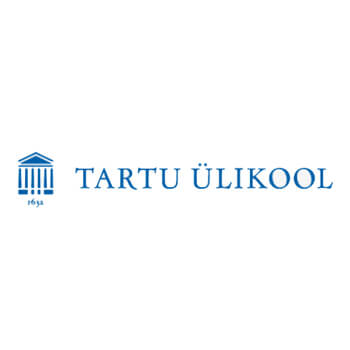
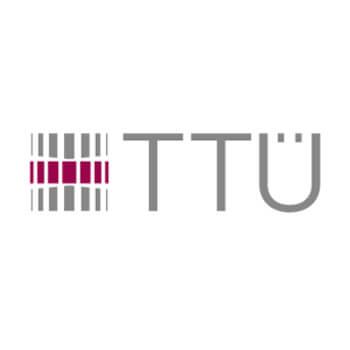


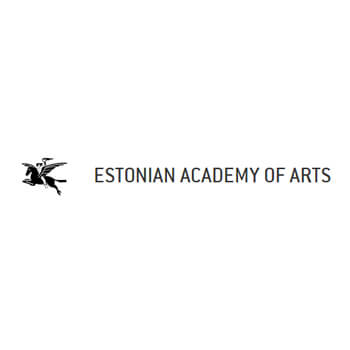
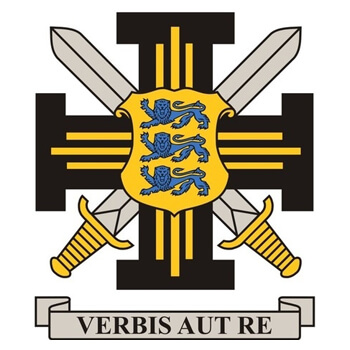
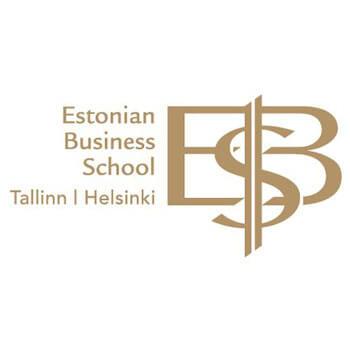
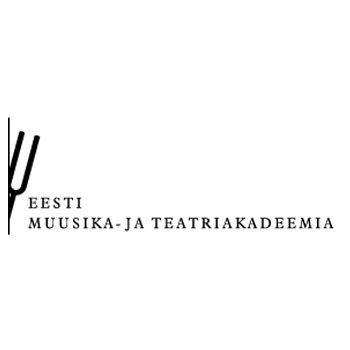










Leave a Reply